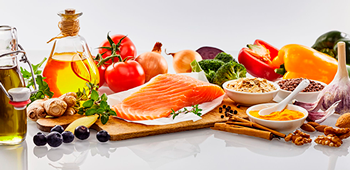
Have you ever wondered what’s in the food you eat? Whether it’s a snack, precooked meal, or soft drink, we should always be conscious about what we’re putting inside our body. There’s been recent interest by consumers in knowing which product is healthier for them and food manufacturers have taken notice, which is why we’ve seen an increase in advertisement veered toward healthy and clean food products. The packaging usually has flashy labels that ensure that what you’re consuming is good for your health or recommended by doctors; some of the words we can typically read on the packages are low fat, sugar free, light, or natural.
However, these labels can be misleading and not truthful in their entirety. Just because a product is sold as “light”, it doesn’t mean that it’s 100% healthy; in fact, it may have other ingredients that counter what the product is trying to sell. Processed foods are rarely good for you if you’re trying to maintain a healthy diet, and while it’s not recommended to eat them on a daily basis, it’s important to read and identify what’s in their labels in order to make an informed decision when it comes to consuming these products.
At LIMARP®, our multidisciplinary team provides patients all the necessary tools and information to improve their overall health. That includes helping them follow their diet plan and guiding them in knowing what’s best for them. This article focuses on how to read labels and what to watch out for when consuming packaged food and drinks.
What Are Food Labels?
Food labels are used to highlight the nutritional facts of a product and they’re usually found on the side of the packaging. These tags can be helpful when you’re following a diet and looking to reduce or increase certain types of food, but learning how to read labels can be tricky and most consumers are not aware of how to distinguish which products are healthier for them.
The Nutrition Facts panel is divided into four categories: Serving Information, Calories, Percent Daily Value, and Nutrients. Each category on the label varies according to the product and the information is specific to the food in question. This means that you may have two different types of pasta from competing brands, but just because the product is similar, it doesn’t mean that their labels are going to look the same.
Let’s take a closer look at what each category on a food label means:
- Serving Information
This is the first category on the food label, which signals the size and number of servings in the package. The sizes are standardized in units that are easy to understand, like cups or pieces, and they’re followed by the metric amount of the serving, which can either be in grams or liters. Keep in mind that the amount of nutrients that appear on the label corresponds to the size of serving, meaning that if you consume two servings, you’re consuming double the amount of nutrients and calories that appear on the label.
Note: The serving size on the label is not a recommendation on how much you should eat or drink.
- Calories
The second label you’ll read is the Calories tag, which provides the measure of the amount of energy you’ll get from one serving. If you’re consuming a product that has 250 calories per serving and the package indicates that there’s a total of four servings, you would be consuming 1,000 calories if you finish the package in one sitting. Everyone has different calorie needs depending on their age, gender, height, weight, and physical activity, and it’s important to contact your dietitian if you’re having trouble finding or sticking to a diet plan. Eating too many calories in a day can be linked to weight gain issues and/or obesity.
- Nutrients
The third section on the label is the list of key nutrients that the product contains. You’ll be able to read the amount of carbohydrates, fats, protein, and cholesterol in percentages, as well as any vitamins or minerals. This tag can help you distinguish the nutrients that can have an impact on your health, both positive or negative, in order to adjust your diet. If you read that a product has high percentages in saturated fats, sodium, or added sugars, it’s best to avoid it.
However, there are some nutrients that you should look for in the food labels of the products you consume, such as dietary fiber, vitamin D, calcium, potassium, and iron. Studies have shown that most people have deficiencies in these nutrients, so looking for products that have them in high percentages is highly recommended.
- Percent Daily Value (% DV)
Each nutrient in the food label has a percentage of daily value which references the amounts we should consume or not exceed throughout the day. The %DV also allows you to determine if a serving of food is high or low in a nutrient, or if it contributes to your daily diet. These percentages have been previously calculated to help you keep track of the nutrients you’re consuming, making them easier to read and understand. If a nutrient on a food label has %DV lower than 5% per serving, it’s considered low; if it exceeds 20% per serving, it’s considered high.
Learning how to read the daily value percentages is very helpful when it comes to distinguishing which products are actually “light” or “low” in something. There’s no interpretation needed or additional calculations, just compare the food labels on two similar products to see which one has a higher or lower count of a certain nutrient. It’s also important to highlight that there are certain elements in a food label that do not have a %DV, such as trans fats, total sugars, and protein. Trans fats and total sugars have no daily reference value because there’s no established recommendation for a daily intake, while manufacturers do not need to list a %DV for protein in the food label unless they market it as “high in protein”.
If you have further doubts about the %DV on a food label and the percentages you should consume according to your daily diet, contact your nutritionist so they can help you better read and understand the dietary tags.
Types of Food Labels
If you’ve started to check the different products in your kitchen, you’ll probably notice that not all food labels look the same. The formats will be different, but that doesn’t mean that one is more difficult to read than the other and now that you know what each section in the label establishes, you should have no trouble at all. Two of the most common labels you’ll probably read are the dual-column label and the single-ingredient sugar label, but according to the Food and Drug Association (FDA), there are other approved labels you may encounter on your products.
The dual-column label is usually found on products that exceed a single serving but that could still be consumed in a single sitting. The columns are divided in “per serving” and “per package” to indicate the amount of calories and nutrients you would be consuming according to how much you eat, whether it’s a single serving or the whole package. Learning how to read and identify the different food labels will help you to maintain a healthy, well-balanced diet, as well as to be aware of what’s inside the food you eat.
Understanding the Ingredients List
Aside from the label, all food packages include an ingredient list that show the consumer what the manufacturer used to make the product. It’s also very important to read this list because it’s another way to learn if what you’re consuming is highly processed or not. The product ingredients are listed by quantity, meaning the first one that appears on the list is what the manufacturer used the most of.
If you’re looking for healthy products, we recommend that you look for food packages that list whole foods as the first ingredients and that the list doesn’t surpass three lines; if it does, it means that the food is highly processed and not entirely healthy for you. This list may not be as specific as a nutrition label, but it’s also important that you read it, since it can be indicative of how healthy a product is and it can show you if the food or drink was exposed to any ingredient you may be allergic to.
Contact Us to Learn More
If you’re a bariatric patient following a diet and wish to know more about your nutrition and how to read food labels, schedule an appointment with one of our doctors. We can help determine the right treatment for you. Contact us online anytime or give us a call at (619) 373-0229.


